This post contains affiliate links. Please see our disclosure policy.
Losing 10 pounds in one month is possible with my realistic weight loss tips and a lot of dedication.
Many people want to set a goal of losing 10 pounds in a month. While losing ten pounds in 30 days is not easy (the average is one to two pounds per week), it is doable if you really commit.
This article includes practical advice on how to safely lose 10 pounds in a month without any fasting or crazy detoxes. I’m talking about actual hard work paying off and results that last!
How do you get there? Proper nutrition, exercise, and serious commitment.
Here are your personal trainer-approved tips on losing 10 pounds in one month
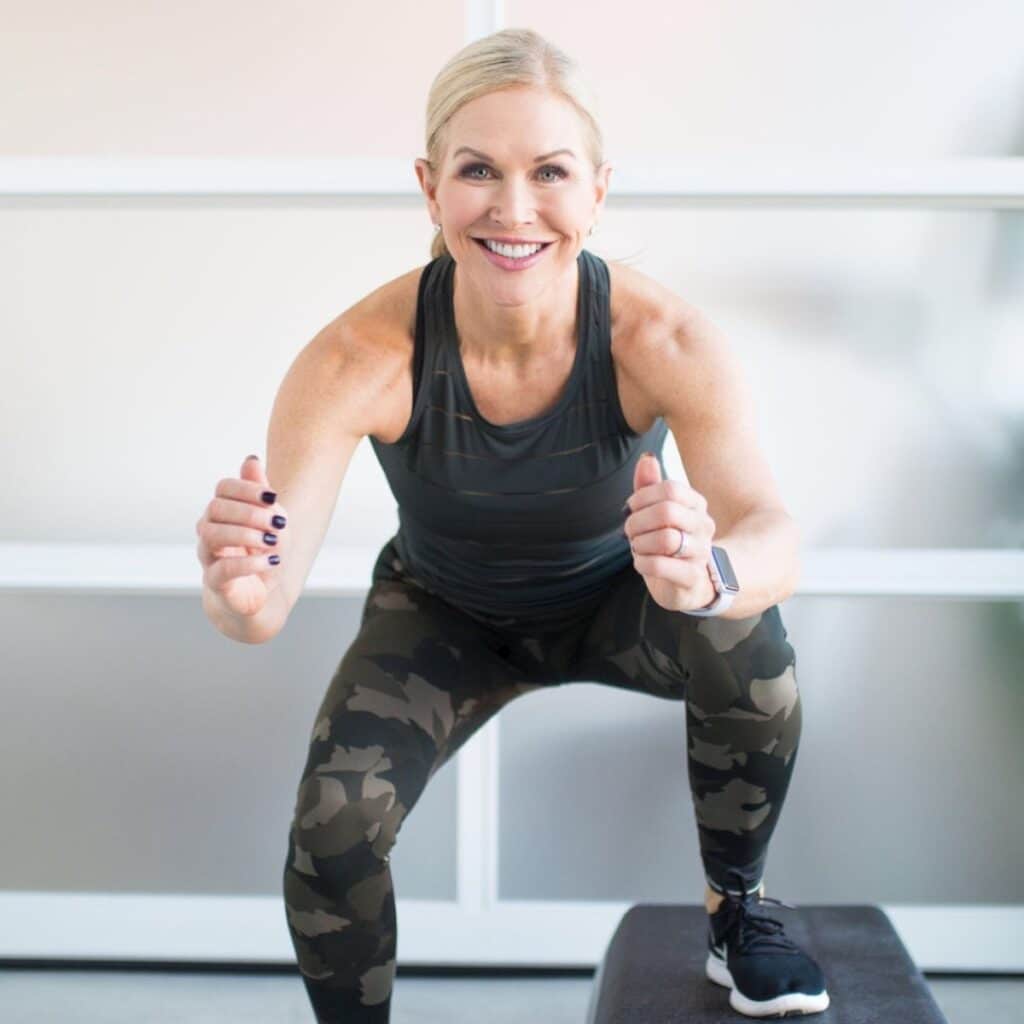
Save This Article To Read Later
Table of Contents
1. Yes, You Need To Count Calories
A calorie deficit is an important strategy for losing weight fast. Both the quantity and quality of your calories matter!
If you eat crappy, you’ll feel crappy, and that’s the bottom line. BUT the number of calories you’re consuming still matters, especially when you have the aggressive goal of losing 10 pounds in one month.
Just remember this somewhat simplified rule for losing weight: burn more calories than you consume.
So, how do you figure out how many calories to eat?
Everyone’s caloric needs are different. The average woman who’s looking to lose weight typically should aim to eat around 1,600 calories per day to help drop the weight.
But keep in mind, that’s an average!
Your calorie intake is something very personal that you will need to experiment with, so consider keeping a detailed food journal or using a food-logging app like MyFitnessPal.
Here are a few of my favorite low-calorie resources to inspire your meal planning:
- Healthy Smoothie Recipes for Weight Loss
- Easy Shredded Chicken Recipes with a Healthy Twist
- My Favorite Low-Calorie Breakfast Ideas
- Deliciously Filling & Low-Calorie Meals
- Low-Calorie Cocktail Recipes for Healthier Sipping
Prioritizing calorie burning will make your weight loss journey more manageable, and journaling is a positive mental health habit as well.

2. Clean Eating For Weight Loss
The type of calories you consume matters too! Clean eating is an important strategy for losing 10 pounds in one month (plus just regular life!) because the type of calories you consume matters too!
I always say, “No one ever got fat by eating too many fruits and vegetables,” because it’s true. Fill up your plate with veggies, fruits, lean protein, and healthy fats with real ingredients.
Yes, that means saying goodbye to processed, packaged foods and artificial ingredients and doing your best to eliminate added sugars. Trust me, I know it’s not easy. I even wrote a helpful guide on how to quit sugar!
Clean eating is one of the tools that will change your diet (and weight!) for good. Creating sustainable weight loss habits boil down to Michael Pollan’s philosophy: “Eat real food. Not too much. Mostly plants.”
You’ll be surprised how far you can get on weight loss goals just by eating clean! (Note: A registered dietician can help you come up with a detailed plan if needed!)
Here are a few of my favorite eating habits tips when you are trying to lose weight (you can find more in my list of sneaky weight loss hacks!):
Eat Slower
Put your fork down between bites to facilitate slower eating habits. When you eat more slowly, your body is able to recognize fullness better, and you’ll prevent yourself from overeating.
Add Fiber
When you’re eating for weight loss, a lot of people are left feeling hungry due to a lower number of calories consumed.
Adding fiber to your meals allows you to feel fuller for longer! Fiber also helps to remove waste from the body, keeping you regular and less bloated!
Hydrate!
Removing sodas and other sugary beverages plays a big role in weight loss, but another factor to consider is upping your water intake! Many times, when we’re thirsty, we reach for a snack, misunderstanding our feelings of thirst for hunger.
Check out my top tips for drinking more water every day.
Drinking plenty of water aids in so many functions and keeps our body performing at its best. It’s truly one of the best things you can implement for your health!
Keep scrolling for my favorite water bottle picks ; )
Cut Back on Refined Carbs
Refined carbs are a type of carbohydrate stripped of their nutrient and fiber content during processing. They’re absorbed quickly into your bloodstream, causing a spike in blood sugar levels and increased hunger.
For best results, swap out refined carbs like white bread, breakfast cereals, and heavily processed pre-packaged foods for whole-grain products like quinoa, oats, brown rice, and barley.
Eat a High-Protein Breakfast
A high-protein breakfast can help you stay on track with your weight loss goals. Eating more protein can reduce the number of daily calories you need to consume. Eating high-quality protein can also cut down on the number of calories it has consumed.
High-protein foods include eggs, cheese, yogurt, eggs, and peanut butter, as well as breakfast cereals and cereals.
One study in 20 adolescent girls found that protein intake increased feelings of fullness and lowered levels of certain hormones that stimulate hunger.
| Product Image | Product Name / Price | Primary Button |
|---|---|---|
3. Combine Cardio and Strength Training
You cannot lose 10 pounds in one month without significantly boosting your activity level, and combining strength training and cardio into one effective HIIT workout will help you get there. (Body weight workouts are fantastic if you don’t have equipment!)
Yes, dietary changes are important, but that’s only one half of the battle. You need regular exercise to see results.
But, so many people get caught up in not knowing where to being, what to do, or how often to exercise. It’s easy to avoid working out or fall into a slump.
So what are the basics?
These are the basic minimum requirements you need to complete each week to lose weight:
| At least 150 minutes of moderate cardiovascular exercise per week | Your cardio workouts can be divided up however you want, as long as you’re getting your heart rate up! These are my picks for the 9 best cardio workouts for weight loss that don’t involve running! |
| At least 2-3 strength training sessions per week | Strength training is the KEY to a revved-up metabolism, because the more muscle you have on your body, the higher your resting metabolic rate. (Your resting metabolic rate is how many calories your body burns at rest.) |
My Recommendation for the Most Impactful Exercise
Using HIIT works will help you combine your weekly strength training and cardio exercise requirements to meet your weight loss goals in less time.
So why not do all of your exercises at the same time? A HIIT workout (or high intensity interval training) will do just that!
Circuit and interval workouts require you to give all-out effort, so they get your heart pumping hard and typically use a series of strength moves to do so. This helps you tackle both your cardio and strength at the same time, which can be helpful if you’re short on time.
A huge factor to consider when you want to lose weight is intensity. You need to be sure you’re training in different heart rate zones. (Use our heart rate calculator to find your personal training zones!)
Try the following workouts to lose 10 pounds in a month
- HIIT For Beginners
- Total-Body Medicine Ball Workout
- Full-Body Kettlebell Workout: Complete Guide For Beginners
- Belly Fat Blast Challenge
- Elliptical Workout For Weight Loss
Keep in mind, all that extra exercise means you’re losing a lot of electrolytes. Check out my recommendations to the best electrolyte supplements to keep your body balanced and full of energy. I take one before every work out!
4. Prioritize Sleep and Minimize Stress
Lack of sleep and stress can both impact your ability to lose weight, just like your caloric intake and exercise plan. Both these factors are often overlooked, but I’m here to tell you they matter!
There’s a scientific link between the stress hormone cortisol and belly fat. And, sleep deprivation throws two hormones that regulate your appetite—leptin, and ghrelin—out of whack, making it harder for you to feel satiated, thus causing overeating.
Work on ways to manage daily stressors and prioritize getting 7-8 hours of sleep per night. These things can help make your weight loss journey a bit easier.
My Tips for Better Nighttime Sleep & Relaxation
- 15 Science Backed Tips to Relax & Get Better Sleep
- Bedtime Yoga For Better Sleep
- 25 Ways to Relax in Less Than 5 Minutes
5. Bring Your Hormones Back Into Balance
Hormonal imbalances can make losing 10 pounds in one month difficult, especially if you’re in perimenopause or menopause.
If you’re currently feeling the menopausal spread around your middle, you’re not alone. And no, you’re not crazy: it does get harder to lose weight as you age. But it’s NOT impossible.
These are my favorite resources for women looking to help their hormones and lose weight in menopause:
- 4 Hormones to Balance for Weight Loss
- 19 Ways To Get Rid of Menopause Belly Fat
- 7 Best Supplements for Menopause Weight Gain
- How to Embrace a Positive Mindset During Menopause
- Foods That Help Manage Menopause Symptoms
If you’re still having trouble losing weight despite making dietary and lifestyle changes, consult your preferred health care professional, nutritionist, or health coach.
Weight loss can be a difficult journey that you don’t have to go alone, and there may be other medical or psychological barriers at play that someone can help you address in a healthy way.
How Much Weight Can You Lose in A Month?
As we mentioned, losing 10 pounds in one month is doable, but it’s not easy and it’s not a guarantee. Losing weight quickly can depend on the individual, their body composition, and their metabolic body type. While it sometimes seems unfair, some people just plain have an easier time losing weight than others.
Can you lose 40 pounds in a month? That’s unlikely, and if you find the scale moving drastically, it’s likely due to water.
Safe Weight Loss Goals to Follow
The American Heart Association recommends that a person sets realistic weight loss goals. According to the CDC, a loss of 1–2 lb per week is a reasonable goal for most people.
CDC: A person who loses 4–8 lb per month is more likely to keep the weight off. The U.S. Department of Agriculture suggests a healthy weight loss routine should consist of: a healthy meal and exercise in a healthy way to maintain the weight loss rate of 1/2lb per week.
Losing weight quickly can also often be a reflection of losing water weight. While the scale may have gone down, water weight isn’t exactly the type of weight you’re looking to lose.
The good news, however, is that our weight loss plan above is sustainable and can be used for long-term success. It’s never too late to start!
Frequently Asked Questions
Yes, it is safe to lose 10 lbs in a month as long as you stick to a healthy, realistic plan and avoid fad diets and detoxes. Exercise, clean eating, hormone balance, and a calorie deficit are the best ways to lose 10 lbs in one month.
The best way to manage hunger while on a calorie deficit is to eat foods rich in fiber, drink plenty of water, aim for a high-protein breakfast, and cut back on refined carbs that can cause sugar spikes and increase hunger.
To track weight loss progress without a scale, pay attention to how your clothes fit and how many inches you’ve lost. This will give you a better idea of fat loss, which is the ultimate goal!
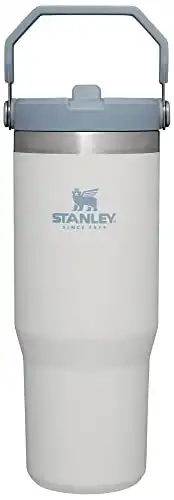
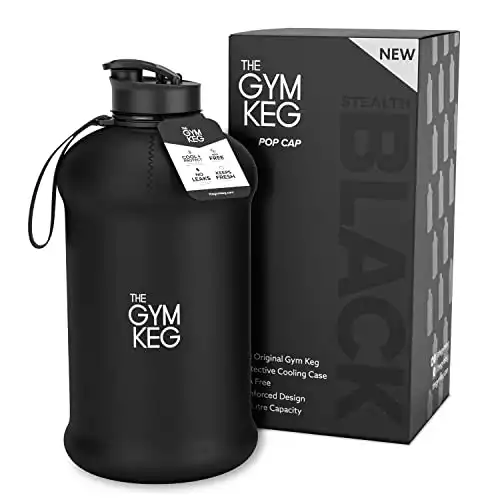

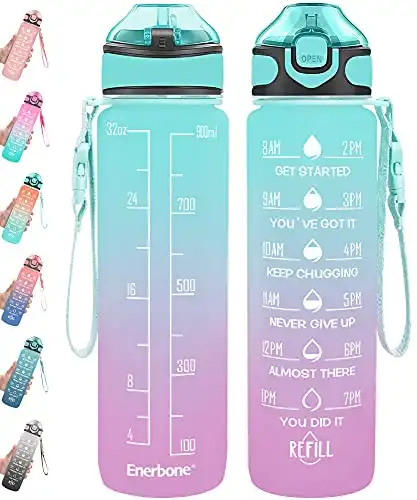
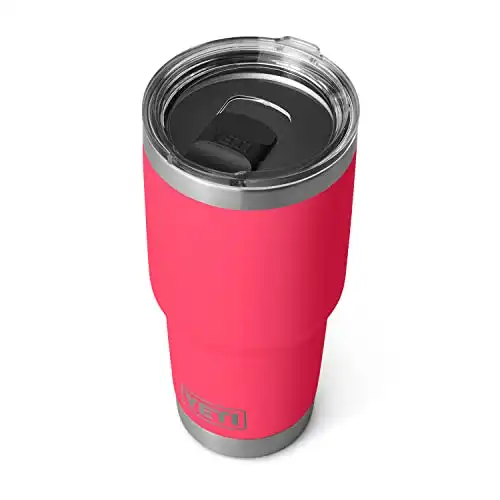
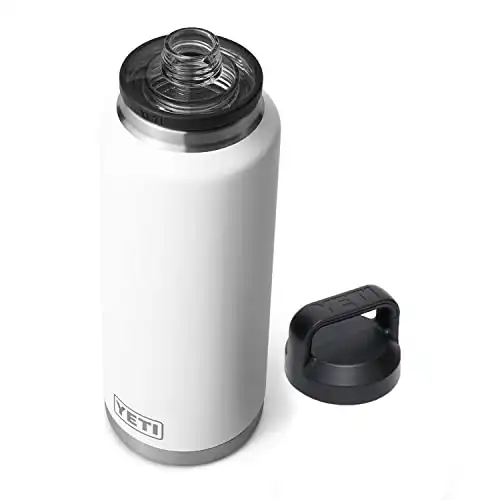



Hi,
Good read but I have a query, I am not a regular, but I go to gym and I am trying to control my diet, although not losing much weight, lost just 2 pounds hardly in last month or so.
In gym, doing cardio mainly, but my lifestyle is sedate as I am blogger myself.
Can You suggest me something? Any changes ? considering I am not young anymore.
Hi Donna – check out this article where you might find some helpful tips: https://gethealthyu.com/25-sneaky-weight-loss-hacks-really-work/
This seems like a lofty goal to loss 10 pounds in a month but it’s entirely possible by making some simple modifications to your diet and lifestyle. By taking one step at a time and make a few small changes each week to lose weight safely and sustainably, keeping it off long term. With a little patience and hard work, you can reach your weight loss goals and improve your overall health in the process.
Hi Donna!
Keep going and remember that it is not all about the scale. Be sure to take proper measurements in several parts of your body. By working out, you may gain muscle which of course weighs more than fat!
Best of luck 🙂
Carla
I am not a regular, but I go to the gym and I am trying to control my diet, although not losing much weight, lost just 2 pounds hardly in last month or so. In the gym, doing cardio mainly, but my lifestyle is sedated as I am a blogger myself. Can You suggest me something? Any changes? considering I am not young anymore.
Hi Ashish –
Oftentimes, losing weight does get harder as you get older, even if you’re someone who has always been able to easily manage your weight with diet and exercise. Cardio is great and moving your body in general is going to help with weight loss however I want to let you in on a little secret.
The more muscle you have on your body, the better your metabolism works. So it’s not just in your head: losing weight after 40 is more difficult than when you were younger. But you don’t have to feel like weight loss after 40 is impossible. My biggest piece of advice would be to add in strength training at least 2 times a week. This is going to help increase your metabolism and will help with muscle toning and building! To find out some of my other top tips check out this blog below!
https://gethealthyu.com/6-steps-to-losing-weight-after-40/
so are we supposed to eat the same items everyday for 30 days, is that what we need to do to try and lose that amount of weight? along with exercise also
Hi there!
You certainly do not need to eat the same items everyday for 30 days. In fact, it is best if you mix up the foods you eat. I always make sure I have a variety of foods in my diet, but I try to make sure that they are whole foods. So for instance fruits, veggies, and protein is a staple in my diet but I don’t eat the same foods every single day. When you are trying to lose 10 lbs in 1 month we just have some tips to keep you more regimented in a shorter period of time.
Exercise will also play a huge part into keeping your body moving during this month of trying to loose some extra pounds. It is important to watch calories in versus calories out, which is where your exercise will play a part.
Hope this helps!
Thanks it is very helpful post. I apply these rules. We can also add things like sports. Ping pong is best for this purpose.
One question nobody asks is How many diets have you been on?
The higher the number, the less weight will come off during the next try.
A youngster, that has never dieted before, can lose 30 lbs fairly quickly.
But even a 20-yr-old who has dieted since age 12, won’t lose much.
Hi There – Great question. I personally do not do diets. I like to say “edit what you eat” and ditch the diet. Now, if you are looking to loose weight quickly you can safely do that as shown in this article here. However, I am a firm believer in living a lifestyle that works for you over a longer period of time. Making your nutrition habits work for your lifestyle is far more important! Hope this helps!
Hi! I am excited to try this! I am a 57 year old menopausal woman who is trying to lose some weight. My question is, you mentioned burning more calories than I consume, so if I consume 1600, do I need to burn that each day?! Not sure I could work out long enough to achieve that 😕
yes, you should burn more than you consume but there are good ways to burn calories quicker and the main one is by building muscle! you would love the challenge we’re doing. its spiffily for woman our age > > Get the details here: https://go.gethealthyutv.com/A31662/
Slowing down and focusing on each movement, I will either raise the weight and decrease the reps.
Absolutely – I love this 🙂 These are great options and easy ways for you to make the workout work for you!
Thanks for sharing. Really need these tips.